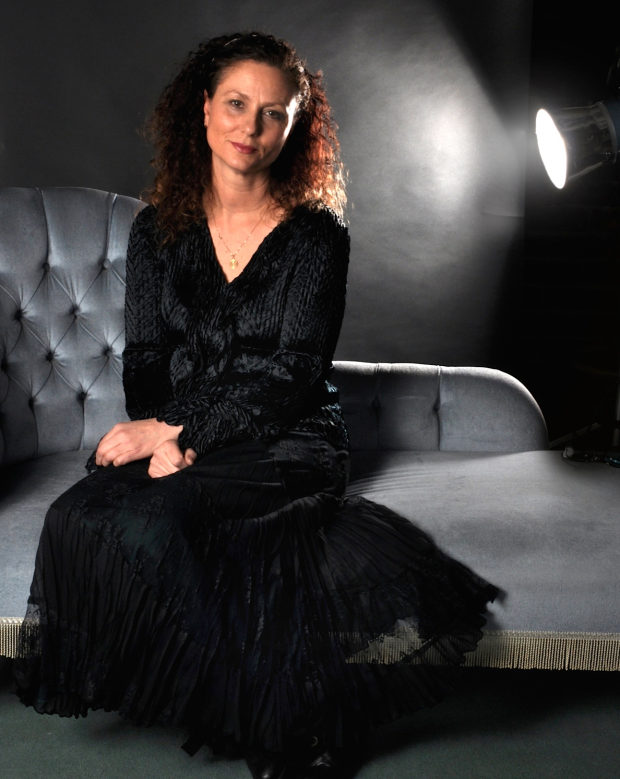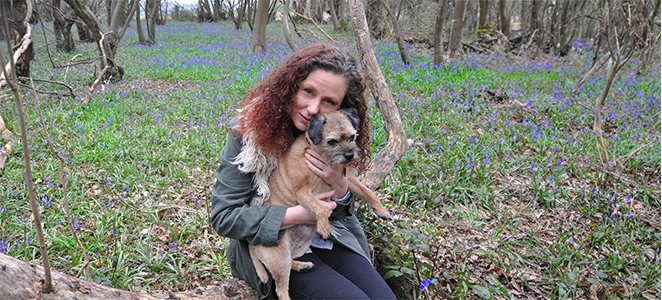Unveiling the Creative Tapestry, Neurodiversity, and Romantic Alchemy Behind the Pages
The journey to becoming an author is as diverse as the tales woven within the pages of a book. Today, we bring you a glimpse into the captivating narrative of T. Stedman, a writer whose path to authorship is as riveting as the stories she pens.
T. Stedman’s literary odyssey began with an unyielding desire to be a writer, a passion that lay dormant within her until her mid-forties. Battling concentration and focus challenges, she found solace in poetry while dedicating three decades of her life to the NHS. It wasn’t until a pivotal moment in her health journey, marked by the introduction of a new medication, that the floodgates of focus swung open, giving birth to a prolific writing career.
With a surge of hyperfocus, T. Stedman embarked on a literary expedition, sketching characters that had long haunted her thoughts and crafting the structure of not one, but twelve novels across three series. In the midst of this creative outpour, she also penned a non-fiction, semi-autobiographical work detailing her struggle with chronic migraines.
Now, armed with the understanding of her ADHD, T. Stedman provides insight into how neurodiversity influences her writing process. She employs an almost OCD regime of meticulous planning and lists, harnessing hyperfocus during specific times of the day. A Clinical Research Practitioner by day, she diligently manages her creative pursuits, deftly navigating the realms of business and marketing.
For T. Stedman, reading is a cherished wind-down activity, a moment to escape into the worlds of others. From the allure of Tehereh Mafi’s “Shatter Me” to the classics like Wuthering Heights and Edgar Allan Poe, her genre tastes are an intriguing blend of romance and grit on the darker side of fantasy. Influenced profoundly by childhood readings of Enid Blyton, she carries on the tradition of transporting readers from the mundane to the extraordinary, infusing her works with a deep-seated escapism while exploring profound questions about identity, purpose, and the journey ahead.
In this exclusive interview with Reader’s House, T. Stedman unveils the layers of her creative process, the influences that shaped her, and the intricate dance of romantic tension within her novels. As she takes us into the heart of her latest work, “Demon in the Attic,” the second installment in her YA Night Shades series, we delve into a narrative that intertwines the supernatural with gothic elements, addressing profound subjects like coping with death and child abuse, all while keeping romance at the core.
Join us as we unravel the complexities of T. Stedman’s literary labyrinth, exploring the mind behind the pen and the captivating worlds she conjures for her readers.
Your debut series, “21st Century Sirens,” blends elements of urban fantasy and romance. What inspired you to create this captivating world, and how did your own interests, such as being a horsewoman and a migraine mentor, influence the series?
Ultimately, I guess I’m a day dreamer. The characters were with me long before I put pen to page. They lived in my head for about two years before I wrote them down. In the end I just had to write them to get rid of them. I had five books worth of plot and wrote book 5 first as it was clearest in my head. Then I shelved it and went back and wrote books one, two, three, four and six. I tried to teach readers, through being a migraine mentor, to capitalise on those periods of mania right before a migraine. For me, it was my most productive time. Being a horse rider also helped me as I could decompress with the only thing that relaxed me. Plus, horses popped up in the plot in many of my books.
The series features a diverse set of characters facing intricate challenges. How do you approach character development, especially considering the complex relationships and dynamics within the Atlantean world? Are any of the characters based on real-life experiences or people?
At the time of writing the sirens I had a rough outline on an A4 sheet, and literally let the characters lead the way. But as I’ve progressed as a writer, I know what I want the characters to achieve by the end of each book and by the end of the series. The complex relationships are easy because real life is like that. Every facet of the female characters are parts of me and the people I’ve known throughout my life and many of the relationships are parts of real people too. People have always been fascinating to me, particularly those with dark characters. And I’ve known a lot. People are seldom all good or all bad and its that that intrigues me: making a part of a baddie likeable and a god guy flawed.
With twelve books and two novellas under your belt, including the latest YA release “Demon in the Attic,” how has your writing process evolved throughout three series? Do you follow a specific routine, and how do you maintain creativity and momentum over multiple novels?
The one thing that has never changed is that I write every single morning for at least an hour, religiously. That way, I’ve always got something on the go and my imagination doesn’t dry up. My process has definitely evolved, though. I used to keep a scene list in a spreadsheet to keep track on all the POVs for the sirens. I would colour code them and see at a glance if they were evenly spaced. I’d also mark clearly when I was coming to the end of an act and the big conflict was coming up. It was essential to keep the pace even and moving forward. Now, I just keep a spreadsheet for each book for character traits and motivations. I also write in first person on my YA books and keep to one POV. That was a new challenge that I’ve been really enjoying.
Your semi-autobiographical work, “My Migraine Story,” stemmed from your migraine-wise blog. Can you share more about your journey as a migraine mentor and how it informed your writing? Did this personal experience play a role in shaping any particular characters or themes in your books?
My blog came from my natural interest in clinical research, which is my day job and my own chronic migraine that left me incapacitated for half of every month. I started to trial things on myself and report my findings on my blog. The book came from wanting to give something back to my readers. I wanted to encourage them to use their unusual brain wiring to achieve their goals. I wanted to show them that if I could do it, then they could too. Being a mentor helped me plan my day to be more effective. To see my own limitations and to rest and fight another day when I needed it. However, the subject of migraine has found its way into the story arc of one of my characters as a result of using certain powers, but I think the depression, or the crash that follows a migraine, has been what I draw on most. It’s really helped me get into the depth of the lows a character experiences.
From Urban Fantasy Romance to Dark Romances and now the Teen Urban Fantasy series “Young Atlanteans,” you’ve explored various genres. How do you navigate the transitions between genres, and what challenges and joys do you find in writing across different themes and tones?
I am not that great at writing to market. Plots come to me and if strong characters follow then that’s what gets written next. There are blurred edges to the genres of my books, but always certain threads. They always have a central romance and they all have elements of fantasy. I guess the only time it makes a difference, is where they fit on a shop platform shelf. Most of my readers slip into each story world fine—or so they tell me. The exciting part is the transition of slipping from multiple POVs in my adult books to First Person in my YA ones. I really enjoy the challenge. Multiple POVs help me hide information from principle characters but reveal them to the reader. First Person helps me delve far deeper into their psyche. I love that. Plus keeping the YA stories PG helps me grow as a writer of romantic tension. You simply have to get better at it to keep eyes on the page. I can also examine really human issues in YA books too and leave the big questions to the adult ones.
Darkly Begotten” marks the conclusion of the “21st Century Sirens” series. What can readers expect from this thrilling finale, and how did you approach tying up the intricate plot threads and character arcs? Are there any surprises or moments in the series that hold special significance to you?
I warn everyone to have tissues at the ready for Darkly begotten. I cried real tears as I wrote it. There are hundreds of intricate plot threads, so I made sure I read all the other books and wrote down every single one to make sure they were resolved. The whole book was a significant moment. To think that that little girl who couldn’t keep a single thought in her head for longer than five minutes actually finished a series of six books, with characters people adored. It was a huge moment. It was also a huge pressure for a satisfactory ending. Readers finally got to find out who the Darkly Begotten actually was. But most of all, I hope I delivered and answered everyone’s burning question: who did Tia Storm actually end up with in the end? (Laughing) It was my proudest day.
British Bestselling Author, T Stedman
British bestselling author, T Stedman, is a keen horsewoman, a devourer of Fantasy Romance and a self-confessed escapist.
She debuted in 2015 with her six-book Urban Fantasy Romance series, 21st Century Sirens. Followed closely by her collection of Dark Romances, The Dark Valentines, which she still writes. She is a migraine mentor, penning her semi-autobiographical work on migraine, My Migraine Story, which spun off from her migraine-wise blog, designed to offer useful advice to fellow migraine sufferers.

Follow the Author
- Author website: https://tstedman.com
- Amazon: https://amzn.to/41U3rNf
- TikTok: https://www.tiktok.com/@ttstedmanauthor?lang=en
- Facebook: https://www.facebook.com/TStedman1author/
- X (Twitter): https://twitter.com/AuthorTStedman
- Instagram: https://www.instagram.com/authortstedman/
- Linked in: https://www.linkedin.com/in/t-stedman-680900104/
PHOTOS : Dennis Molyneux.


